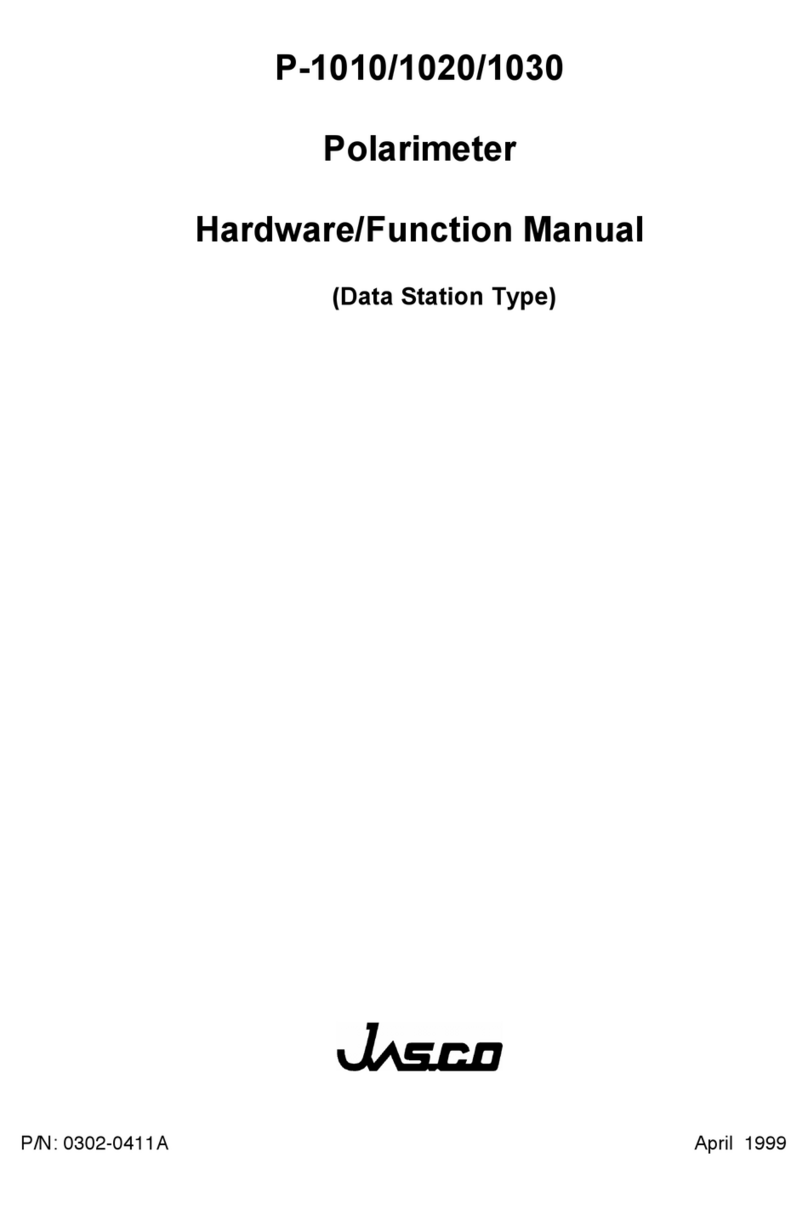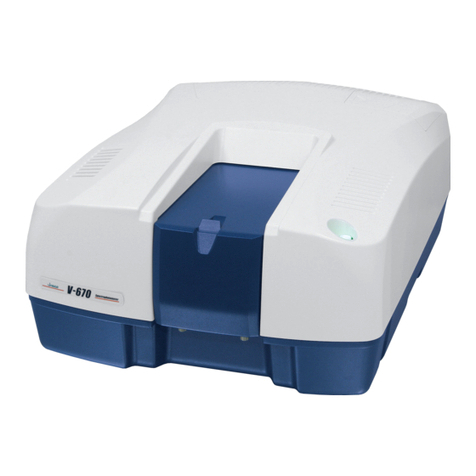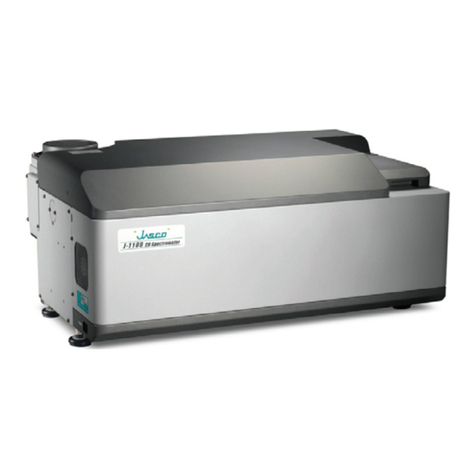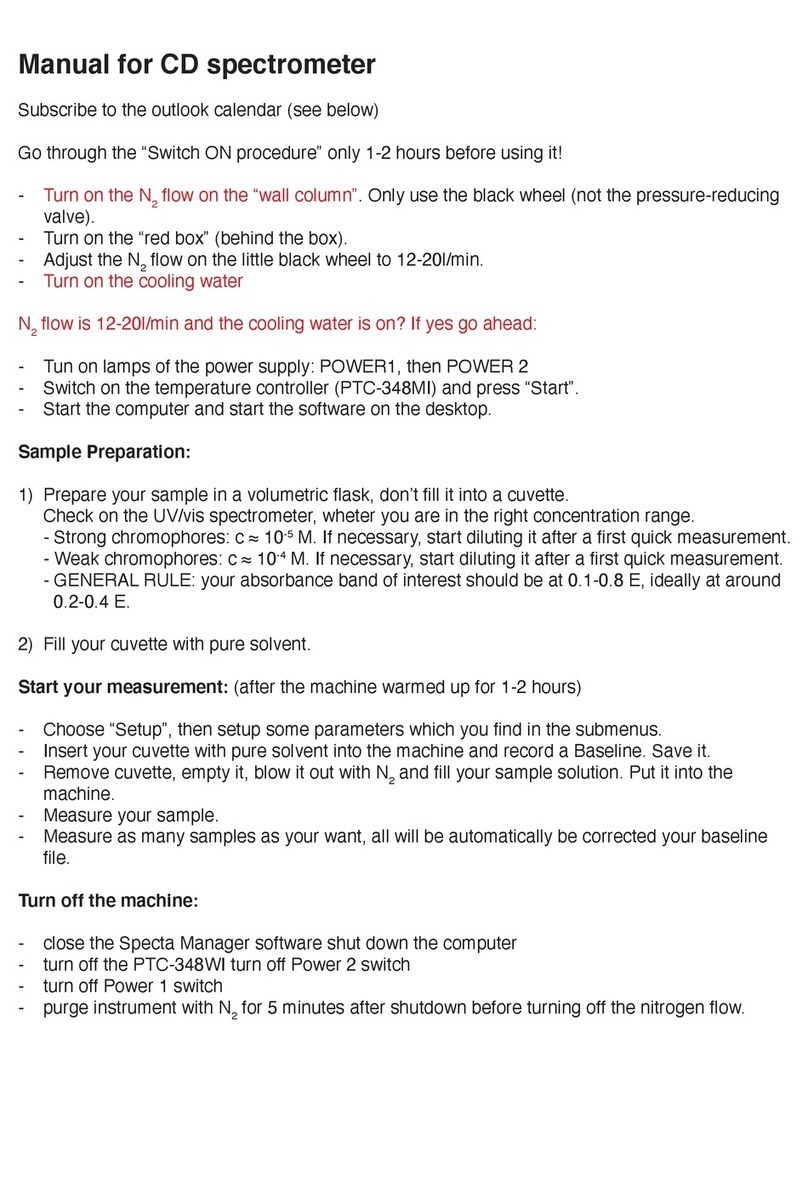
3
A xenon lamp is used as the light source. The light emitted from the xenon lamp is
converged by the M1mirror into the S1entrance slit. The optical system between the
S1entrance slit and the S2intermediate slit is referred to as the first monochromator,
and the optical system between the S2intermediate slit and the S3exit slit is referred to
as the second monochromator. Such an optical system, comprised of two
monochromators, is known as a double monochromator. The capability of a double
monochromator reducing stray light makes it indispensable for CD measurement.
The instrument uses crystal prisms (P1and P2) that have different axial orientations, so
that the light that passes through the monochromator is not only monochromated, but
also linearly polarized, and oscillates in the horizontal direction.
This linearly-polarized light is modulated by the modulator into right and left circularly-
polarized beams of light. The modulator subjects quartz to mechanical stress in order
to produce circular polarization in the crystal, based on the principle of the Piezo effect.
When a sample with circular dichroism is placed in the sample chamber, the intensity, I,
of the transmitted light changes as shown in Fig. 1.2 :
IR
ILIA
S
Time
Intensity
Fig. 1.2 Intensity of transmission light
The relationship between the minimum and maximum intensities and the right and left
circularly-polarized light depends on whether the value ERis smaller or larger than the
value EL. In Fig. 1.2, the solid line represents the case when ERis greater than EL, and
the dotted line represents the case when ERis smaller than EL. For the definitions of IA
and S, refer to Section 1.1.1 ″Principles of operation″.
When light with intensity fluctuations such as that shown in Figure 1.2 is incident upon
the photomultiplier tube, the output signal consists of DC components equivalent to IA,
and AC components equivalent to S.
1.1.3 Electrical system
The output signal from the detector (PM photomultiplier tube) consists of an AC
component electrically modulated by the modulator and a DC component that
represents the average intensity of the transmission light. The CD value can be derived
from the ratio between the DC component and the AC component. This instrument
varies the PM voltage in order to maintain a constant DC component, and utilizes the
AC component as the CD signal. Therefore, once the AC signal is calibrated using a
standard sample, the correct CD value can be obtained.
Fig 1.3 shows a block diagram of the electrical system. Since the AC and DC
components can be discussed independently, they are described separately in
reference to Figure 1.3.



































